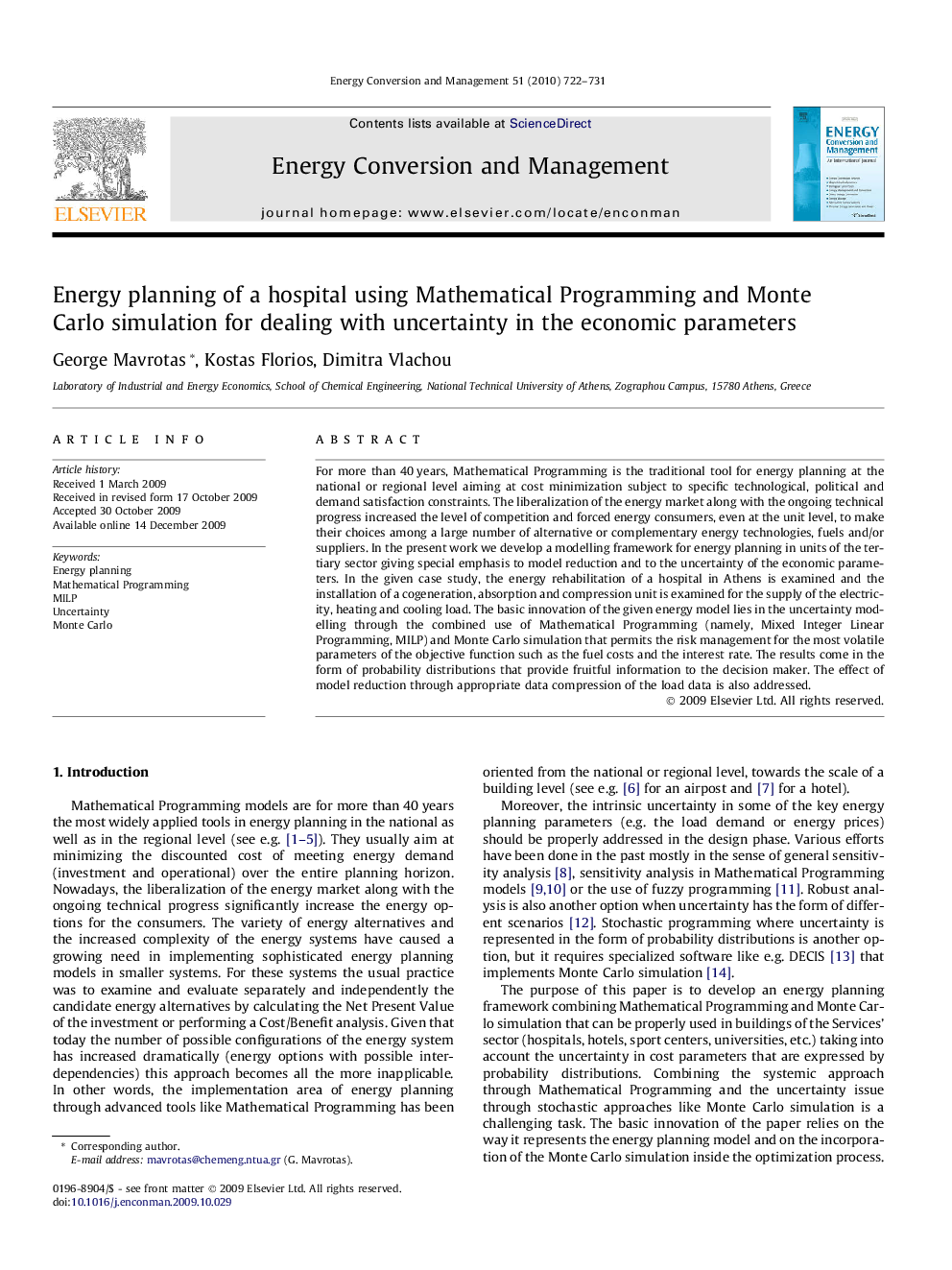| Article ID | Journal | Published Year | Pages | File Type |
|---|---|---|---|---|
| 761525 | Energy Conversion and Management | 2010 | 10 Pages |
For more than 40 years, Mathematical Programming is the traditional tool for energy planning at the national or regional level aiming at cost minimization subject to specific technological, political and demand satisfaction constraints. The liberalization of the energy market along with the ongoing technical progress increased the level of competition and forced energy consumers, even at the unit level, to make their choices among a large number of alternative or complementary energy technologies, fuels and/or suppliers. In the present work we develop a modelling framework for energy planning in units of the tertiary sector giving special emphasis to model reduction and to the uncertainty of the economic parameters. In the given case study, the energy rehabilitation of a hospital in Athens is examined and the installation of a cogeneration, absorption and compression unit is examined for the supply of the electricity, heating and cooling load. The basic innovation of the given energy model lies in the uncertainty modelling through the combined use of Mathematical Programming (namely, Mixed Integer Linear Programming, MILP) and Monte Carlo simulation that permits the risk management for the most volatile parameters of the objective function such as the fuel costs and the interest rate. The results come in the form of probability distributions that provide fruitful information to the decision maker. The effect of model reduction through appropriate data compression of the load data is also addressed.
